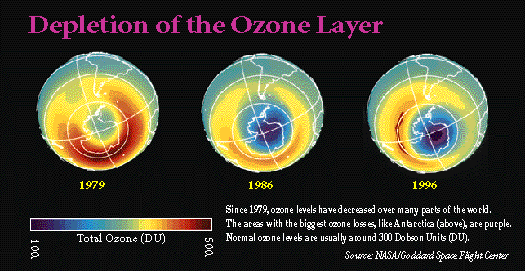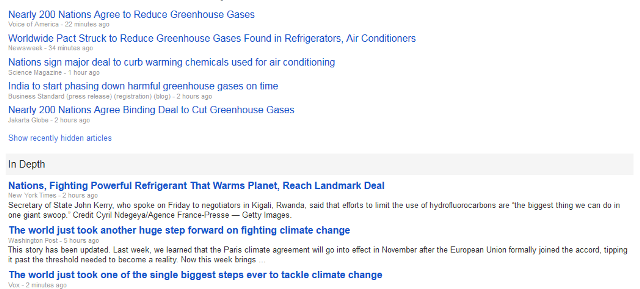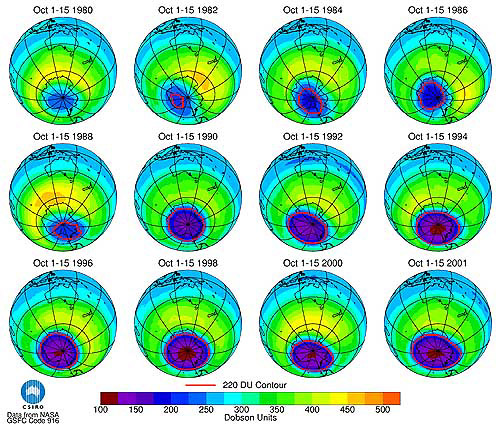Montreal Protocol: Difference between revisions
Siterunner (talk | contribs) No edit summary |
Siterunner (talk | contribs) No edit summary |
||
| Line 14: | Line 14: | ||
The two ozone treaties have been ratified by 197 parties, which includes 196 states and the European Union,[8] making them the first universally ratified treaties in United Nations history. | The two ozone treaties have been ratified by 197 parties, which includes 196 states and the European Union,[8] making them the first universally ratified treaties in United Nations history. | ||
<big>'''Update: HFC Addition to Protocol'''</big> | |||
[[File:HFC Greenhouse Gas Agreement - October 15, 2016.png]] | |||
Revision as of 14:19, 15 October 2016
https://en.wikipedia.org/wiki/Montreal_Protocol
Chlorofluorocarbons (CFCs) Phase-out Management Plan
The Montreal Protocol on Substances that Deplete the Ozone Layer (a protocol to the Vienna Convention for the Protection of the Ozone Layer) is an international treaty designed to protect the ozone layer by phasing out the production of numerous substances that are responsible for ozone depletion.
It was agreed on 16 September 1987, and entered into force on 1 January 1989, followed by a first meeting in Helsinki, May 1989. Since then, it has undergone eight revisions, in 1990 (London), 1991 (Nairobi), 1992 (Copenhagen), 1993 (Bangkok), 1995 (Vienna), 1997 (Montreal), 1998 (Australia), 1999 (Beijing) and 2007 (Montreal).
As a result of the international agreement, the ozone hole in Antarctica is slowly recovering. Climate projections indicate that the ozone layer will return to 1980 levels between 2050 and 2070.Due to its widespread adoption and implementation it has been hailed as an example of exceptional international co-operation, with Kofi Annan quoted as saying that "perhaps the single most successful international agreement to date has been the Montreal Protocol".
In comparison, effective burden sharing and solution proposals mitigating regional conflicts of interest have been among the success factors for the Ozone depletion challenge, where global regulation based on the Kyoto Protocol has failed to do so. In case of the ozone depletion challenge, there was global regulation already being installed before a scientific consensus was established. As well in comparison, lay people and public opinion were more convinced about possible imminent risks.
The two ozone treaties have been ratified by 197 parties, which includes 196 states and the European Union,[8] making them the first universally ratified treaties in United Nations history.
Update: HFC Addition to Protocol



